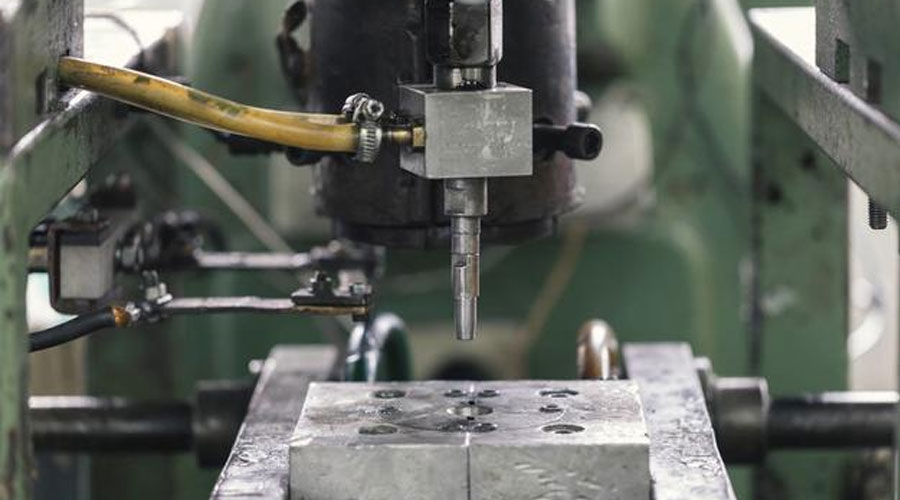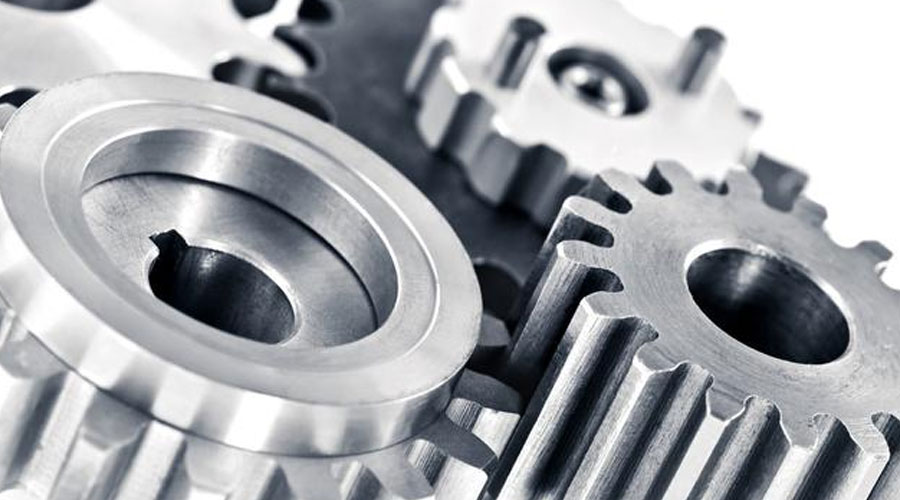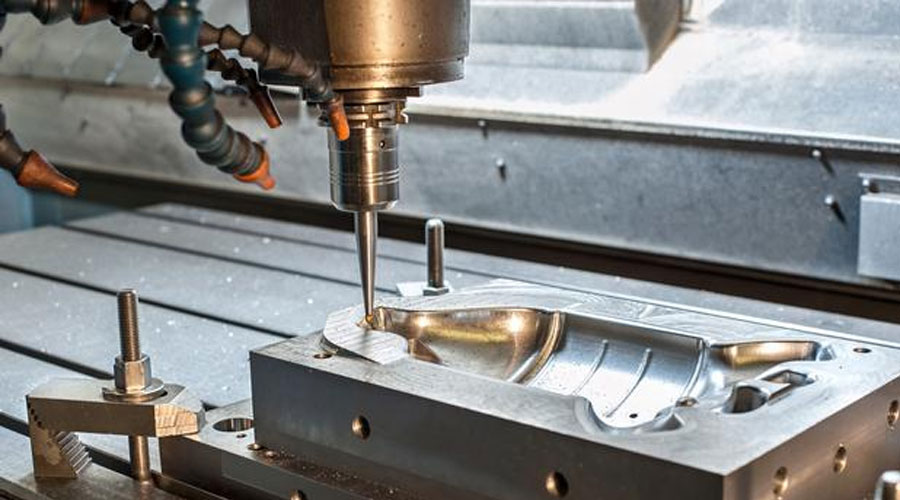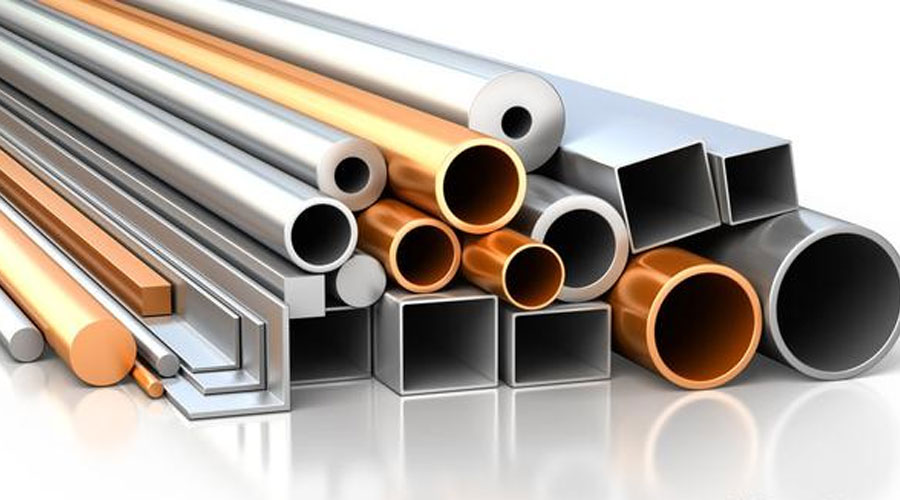Metal Material List For Cnc Machining And Mold Manufacturing
24 kinds of materials commonly used in machinery and mold machining
| This article summarizes more than 20 kinds of metal materials used in mold manufacturing and cnc machining. |
1.45——High-quality carbon structural steel is the most commonly used medium carbon quenched and tempered steel
Main features: The most commonly used medium carbon quenched and tempered steel, which has good comprehensive mechanical properties, low hardenability, and is prone to cracks during water quenching. Small pieces should be tempered, and large pieces should be normalized. Application examples: Mainly used to manufacture high-strength moving parts, such as turbine impellers and compressor pistons. shafts, gears, racks, worms, etc. Pay attention to the preheating of welded parts before welding, and stress relief annealing after welding.
2. Q235A (A3 steel)-the most commonly used carbon structural steel
Main features: High plasticity, toughness and welding performance, cold stamping performance, as well as certain strength and good cold bending performance. Application examples: Widely used for parts and welding structures with general requirements. Such as low-tension tie rods, connecting rods, pins, shafts, screws, nuts, ferrules, brackets, machine bases, building structures, bridges, etc.

3. 40Cr——one of the most widely used steel types, belonging to alloy structural steel
Main features: After quenching and tempering, it has good comprehensive mechanical properties, low temperature impact toughness and low notch sensitivity, good hardenability, high fatigue strength can be obtained when oil cooling, and parts with complex shapes are easy to water cooling Cracking occurs, the cold bending plasticity is medium, the cutting workability after tempering or tempering is good, but the weldability is not good, and cracks are easy to occur. It should be preheated to 100 ~ 150 ℃ before welding. It is generally used in the tempered state. Carry out carbonitriding and high frequency surface quenching treatment. Application examples: After quenching and tempering, it is used to manufacture medium-speed and medium-load parts, such as machine tool gears, shafts, worms, spline shafts, thimble sleeves, etc. After quenching and tempering and high-frequency surface quenching, it is used to manufacture high-hardness and resistant Grinding parts, such as gears, shafts, main shafts, crankshafts, mandrels, sleeves, pins, connecting rods, screws and nuts, intake valves, etc., are used to manufacture heavy-duty and medium-speed impact after quenching and tempering at medium temperature Parts, such as oil pump rotors, sliders, gears, main shafts, sleeves, etc., are used to manufacture heavy-duty, low-impact, wear-resistant parts such as worms, main shafts, shafts, sleeves, etc. after quenching and low temperature tempering Nitrogen percolation is used to manufacture transmission parts with large size and high temperature impact toughness, such as shafts and gears.
4. HT150-gray cast iron
Application examples: gear box, machine bed, box, hydraulic cylinder, pump body, valve body, flywheel, cylinder head, belt wheel, bearing cover, etc.
5.35——Common materials for various standard parts and fasteners
Main features: Appropriate strength, good plasticity, high cold plasticity, and acceptable weldability. Under cold conditions, it can be partially upset and drawn. Low hardenability, use after normalizing or tempering Application examples: Suitable for the manufacture of small-section parts, parts that can bear large loads: such as crankshafts, levers, connecting rods, shackles, etc., various standard parts, fastener .

6.65Mn-commonly used spring steel
Application examples: small-sized flat springs, round springs, cushion springs, spring springs, spring rings, valve springs, clutch springs, brake springs, cold coil springs, springs, etc.
7. 0Cr18Ni9——The most commonly used stainless steel (US Steel No. 304, Japanese Steel No. SUS304)
Features and applications: As the most widely used stainless steel, such as food equipment, general chemical equipment, originally from industrial equipment.

8. Cr12——Commonly used cold work die steel (American Steel No. D3, Japanese Steel No. SKD1)
Features and applications: Cr12 steel is a widely used cold work die steel, which is a high carbon and high chromium type of leestenite steel. The steel has good hardenability and good wear resistance; because the carbon content of Cr12 steel is up to 2.3%, the impact toughness is poor, brittle cracking, and uneven eutectic carbides are easy to form; Cr12 steel due to With good wear resistance, it is mostly used to manufacture cold punches, punches, blanking dies, cold heading dies, cold extrusion die punches and female dies, drill sleeves, and gauges that require low wear resistance under low impact load. , Wire drawing dies, stamping dies, thread rolling plates, drawing dies, and cold press dies for powder metallurgy, etc.
9.DC53-commonly used cold work die steel imported from Japan
Features and applications: High strength and toughness cold work die steel, Japan Datong Special Steel Co., Ltd. steel number. After high temperature tempering, it has high hardness, high toughness, and good linear cutting. For precision cold stamping dies, drawing dies, thread rolling dies, cold punching dies, punches, etc. 10, SM45-ordinary carbon plastic mold steel (Japanese steel number S45C)
10. DCCr12MoV-wear-resistant chrome steel
Domestic. Lower carbon content than Cr12 steel, and adding Mo and V, carbide unevenness has been improved, MO can reduce carbide segregation and improve hardenability, V can refine grains and increase toughness. This steel has high Hardenability, the cross section can be fully hardened below 400mm, and can still maintain good hardness and wear resistance at 300 ~ 400 ℃, which has higher toughness than Cr12, small volume change during quenching, and high wear resistance and Good comprehensive mechanical properties. Therefore, it can manufacture various molds with large cross-sections, complex shapes and withstand large impacts, such as ordinary drawing dies, punching concave dies, punching dies, blanking dies, trimming dies, hemming dies, and drawing dies. , Cold extrusion die, cold cutting scissors, circular saw, standard tools, measuring tools, etc.
11. SKD11-ductile chromium steel
Produced by Hitachi, Japan. Technically improve the casting structure in steel and refine the grain. The toughness and wear resistance of Cr12mov are improved. The service life of the mold is extended.

12. D2——High carbon and chromium cold work steel
Made in the U.S. It has high hardenability, hardenability, wear resistance, high temperature oxidation resistance, good corrosion resistance after quenching and polishing, small heat treatment deformation, and it is suitable to manufacture various cold work molds that require high precision and long life. , Knives and measuring tools, such as drawing die, cold extrusion die, cold shear knife, etc.
13.SKD11 (SLD)-non-deformation toughness high chromium steel
Produced by Hitachi, Japan. As the content of MO and V in the steel increases, the casting structure in the steel is improved, the grains are refined, and the carbide morphology is improved, so the strength and toughness of this steel (bending strength, deflection, impact toughness) Etc.) is higher than SKD1, D2, wear resistance has also increased, and has a higher tempering resistance. Practice has proved that the life of this steel mold is improved than Cr12mov. Often manufacturing high-demand molds, such as tensile molds, impact Grinding wheel die etc.
14. DC53-high toughness and high chromium steel
Produced by Datong, Japan. The heat treatment hardness is higher than SKD11. After high temperature (520-530) tempering, it can reach 62-63HRC high hardness. DC53 exceeds SKD11 in strength and wear resistance. The toughness is twice that of SKD11. The toughness of DC53 is in Cold work die manufacturing rarely has cracks and cracks. It greatly improves the service life. The residual stress is small. The residual stress is reduced after high temperature turning. Because the cracks and deformation after wire cutting are suppressed. The machinability and abrasiveness exceed SKD11. For precision stamping dies, cold forging, deep drawing dies, etc.
15. SKH-9-general-purpose high-speed steel with high wear resistance and toughness
Produced by Hitachi, Japan. Used in cold forging dies, cutting machines, drills, reamers, punches, etc.
16.ASP-23-powder metallurgy high-speed steel
Produced in Sweden. Carbide distribution is extremely uniform, wear-resistant, high toughness, easy to process, heat treatment dimensionally stable. Used for various long-life cutting tools such as punches, deep drawing dies, drilling dies, milling cutters and shear blades .
17. P20——Generally required size plastic mold
Made in the USA. Can be eroded by electric operation. Pre-hardened in the factory state HB270-300. Hardened hardness HRC52.
18.718-high-demand size plastic mold
Made in Sweden. Especially for electric erosion operation. Pre-hardened HB290-330. Hardened hardness HRC52
19. Nak80-high mirror surface, high precision plastic mold
Produced by Datong Plant in Japan. Pre-hardened HB370-400 in the factory state. Hardened hardness HRC52
20. S136——Anti-corrosion and mirror polished plastic mold
Made in Sweden. Pre-hardened HB < 215. Hardened hardness HRC52.
21. H13——Common commonly used die casting mold
Used for aluminum, zinc, magnesium and alloy die casting. Hot stamping die, aluminum extrusion die,
22. SKD61-advanced die casting mold
Produced by Hitachi, Japan, through ballast remelting technology, the service life is significantly improved than H13. Hot stamping die, aluminum extrusion die,
23. 8407-advanced die casting mold
Made in Sweden. Hot stamping die, aluminum extrusion die.
24.FDAC-added sulfur to enhance its ease of cutting
The factory pre-hardness hardness is 338-42HRC, which can be directly engraved and processed without quenching and tempering. It is used for small batch molds, simple molds, various resin products, sliding parts, and short delivery mold parts. Glasses frame mould
|
PTJ Machining Capabilities |
|
Automatic Bar Machining – capacity for parts from 1/16" to 2 5/8” CNC Turning – CNC multi-axis machining centers for superior speed & flexibility Custom Machining - expert machined components delivered on time Multi Spindle Machining- Davenport, Euro turn, New Britain & Acme Gridley Screw Machine Products – precision components from a broad variety of materials & Equipment Swiss Machining – micro-parts to 1-1/4 round diameter providing speed, high capability including precision tolerances and specialized finishes High Volume Machining – Specialized in machined parts exceeding 1,000 pieces up to millions of pieces for optimum efficiency CNC Milling - Machining from bar stock, plate or block metal using up to 3 axis of motion 5 axis (11 axis) Machining – Multi Axis Multi spindle technology for completing complex parts efficiently in one operation. C=0 sampling plan & equipment versatility provide one stop shop capability for a variety of applications |
What Can we help you do next?
∇ Get more information about Cnc Machining Shop
→Case study-Find out what we have done.
→Ralated tips about cnc machining services
By PTJ Manufacturing Shop|Categories: Blog|Tags: cnc milling services, cnc turning services, milling parts, turning parts, machining parts, special parts,faqs,technical news,company news,material news |Comments Off
